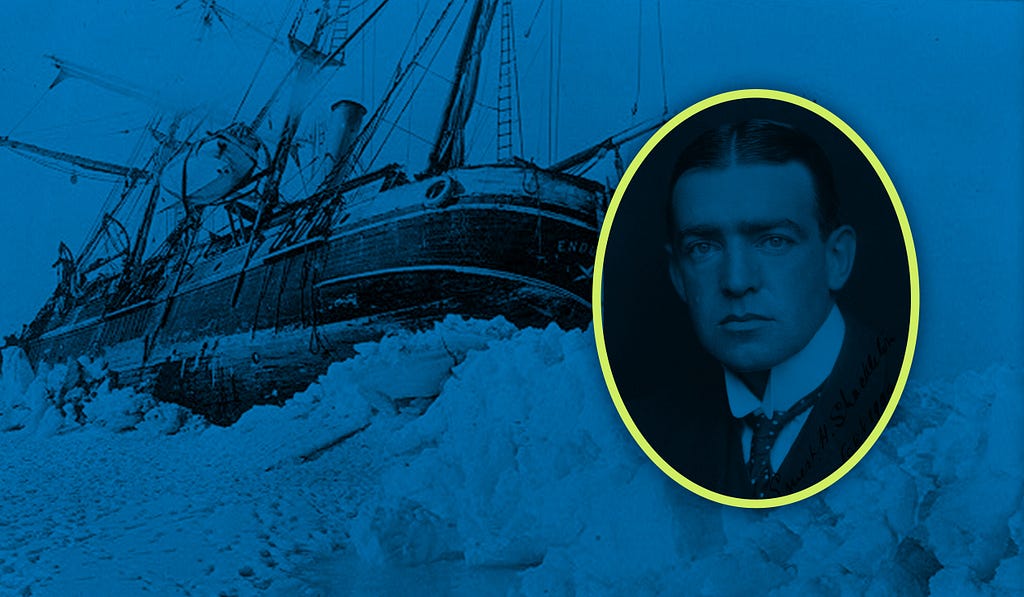
A Leadership Model for Federal Contracting in 2025
How a century-old disaster is still teaching valuable lessons
Federal contracting became unpredictable this year. What was a steady, reliable business sector turned volatile overnight. DCG wasn’t immune to the tumult. We lost $3.5 million in projected 2025 revenue due to contract terminations by DOGE and, in combination with other market factors, we had to downsize. We were forced to reduce our staff by more than 30%.
Our sales cycles got longer. Long-term plans turned into short-term decisions. Budgets for existing work were reduced. Many of the assumptions we made in planning for 2025, and beyond, evaporated almost instantaneously. We were in uncharted waters.
Looking for inspiration, I thought about Ernest Shackleton. A couple years ago, I was exposed to his story as a study in leadership, and I’ve been leaning on the valuable lessons learned from his actions.
Focus on what you can control
In 1915, during an expedition to Antarctica, Shackleton’s ship, Endurance, was trapped by ice and damaged beyond repair. The mission quickly altered from one of discovery to survival as the crew ultimately was stranded for 634 days before finding safety.
Why does this story matter to DCG, and how does it help plot our course for the future? A leader’s biggest challenge is often not technical, it’s human — to keep the team cohesive and the flame of hope burning when the cold is intense. It’s an important perspective that, often subconsciously, helped me navigate the first six months of the year and one that will continue to be instrumental in shaping the future of our company. Below are four lessons from Shackleton that are helping us navigate 2025:
- The mission changes, the care remains: When the expedition failed, Shackleton created a new mission: Get everyone home safely. So far this year, we’ve redefined what success is for DCG and gave our leadership team a new purpose — stay solvent and continue to move forward. And we’ve maintained a non-negotiable that business decisions are made using data-informed strategies and any staffing actions are handled with empathy and humanity.
- Optimism as a strategy: Even with the ship sinking, Shackleton maintained a good mood and the certainty that they’d get out of there. He knew that the leader’s state of mind defined the group’s. His philosophy was simple: Difficulties are only obstacles to overcome. DCG’s leadership has acted similarly. Yes, some days are more difficult than others. But we support each other. Pick each other up. Encourage staff to do the same for their peers. Personally, as a basketball fan, the phrase “survive and advance,” coined years ago as a mantra for the NCAA basketball tournament, is a daily reminder that there’s (likely) positive movement coming.
- Routine against chaos: To combat idleness and despair, Shackleton instituted strict routines in the camp. Each man had tasks, mealtimes, and even leisure time, such as games and improvised plays. External order helped maintain internal order. We use similar concepts at DCG. Our meeting cadences, even with reduced numbers of staff, are consistent. Our systems and processes are unaltered. We’re resolute on who we are culturally and how we meet our client’s mission. Many of our strategic initiatives are delayed but not cancelled, signaling our intent to follow through with public plans. With chaos reigning outside our walls, how we operate serves as the consistent and calming variable.
- Presence and active listening: Shackleton dined in different tents each night, talked to each crew member, listened to their grievances, and mediated conflicts. He led games, jokes, and moments of fraternization after dinner. He was present, not above. Communication and camaraderie matter in times of crisis. I, and my colleagues on the executive team, are focused on real-time transparency — even when we don’t have all the answers. We have touchpoints with leadership and encourage small-group interactions to build more personal connections. In a recent all-hands meeting, I shared both cautious optimism and honest uncertainty. Some teammates welcomed the openness. Others felt uneasy. The moment reinforced that transparency isn’t just about facts; it’s about consistency. It’s about being aware of what the team wants to know, setting clear expectations, keeping people informed as things change, and being comfortable with the fact not everyone will react the same.
Times may change, but the roots of good leadership remain the same
Shackleton demonstrated that leadership in crisis is not about having all the answers but about caring for people while building the path forward. I don’t have all the answers to today’s challenges. But I continue to learn from leaders like Shackleton — and from my own team — that courage, empathy, and resilience are, more than ever, the most revolutionary tools of leadership.



